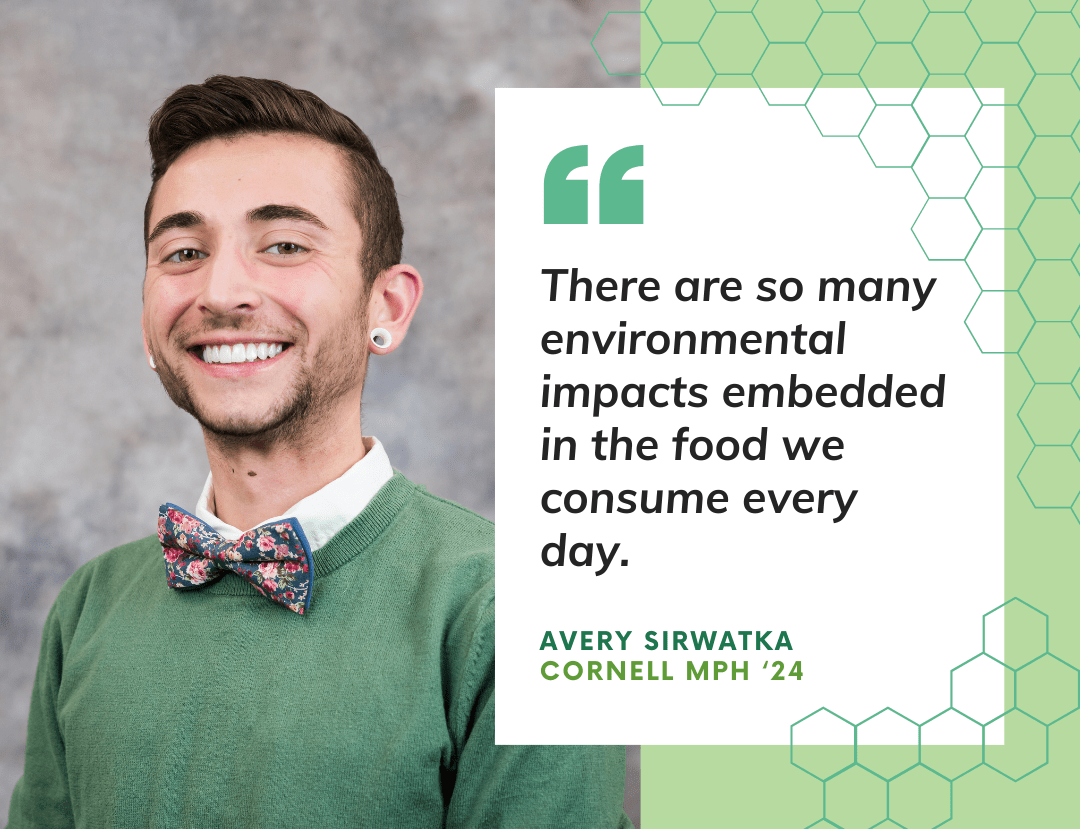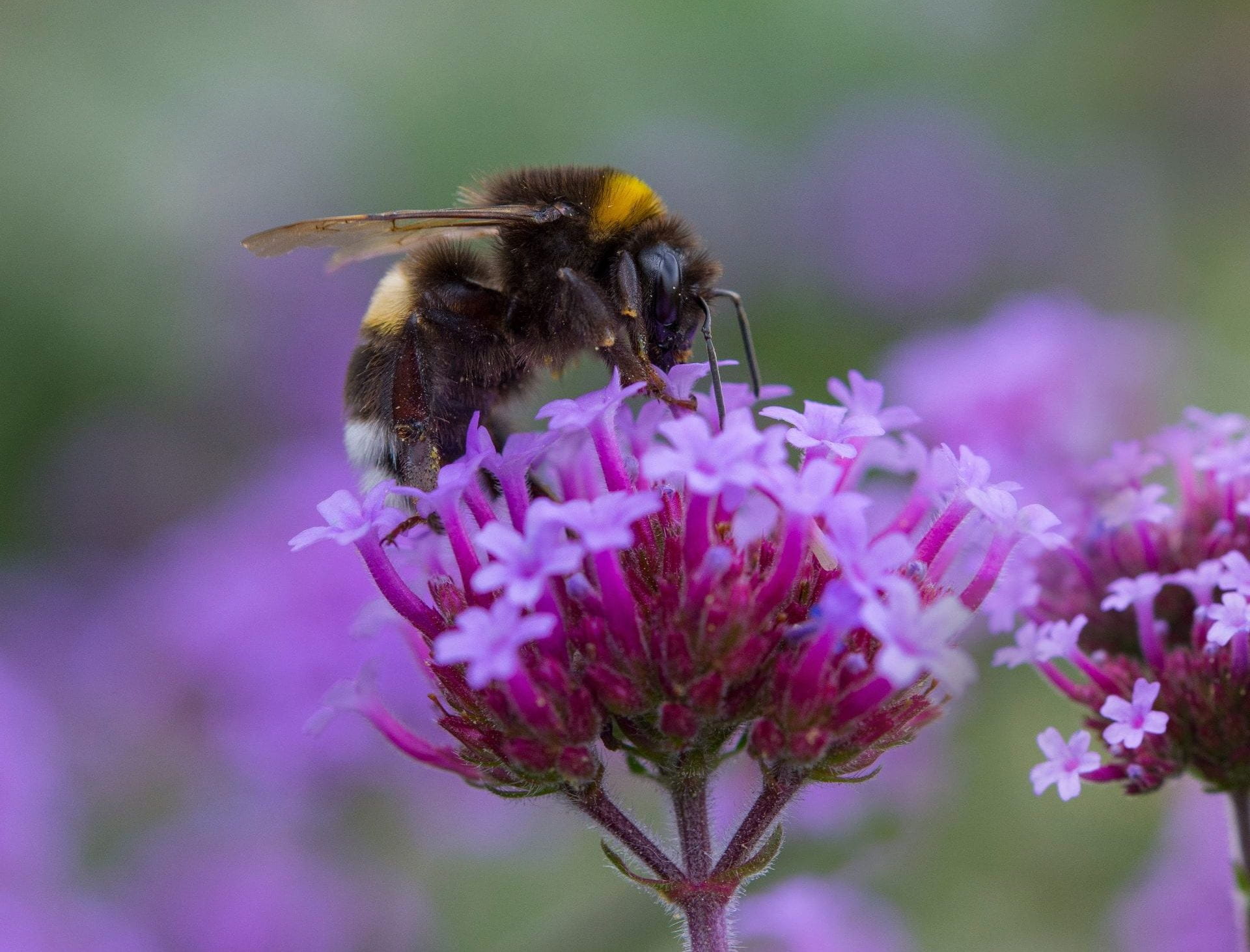Food systems & sustainability
 Avery Sirwatka worked on farms, in greenhouses, in food distribution, and in food retail for years before first learning about ‘food systems’ in college as a framework for the complex interconnections between these sectors. As an undergraduate in Buffalo, New York, Sirwatka worked with agencies and nonprofits on the ground to “connect policy with fields like urban planning to build more equitable and sustainable food systems.” He wanted to learn how to make broad impacts by focusing on environmental justice issues in the food system “in the most sustainable way possible.”
Avery Sirwatka worked on farms, in greenhouses, in food distribution, and in food retail for years before first learning about ‘food systems’ in college as a framework for the complex interconnections between these sectors. As an undergraduate in Buffalo, New York, Sirwatka worked with agencies and nonprofits on the ground to “connect policy with fields like urban planning to build more equitable and sustainable food systems.” He wanted to learn how to make broad impacts by focusing on environmental justice issues in the food system “in the most sustainable way possible.”
“Many folks think of sustainability in terms of the environment alone,” he reflects, “but to me, sustainability is about resilience, and how organizations and institutions are utilizing natural resources and building environments with communities to sustain long-term outcomes.”
Sirwatka is particularly interested in how land and water rights, which are central to food systems, can be addressed with legal and public health tools. “These issues are about how rural environments are going to change, how wildlife species will be impacted and impact other animals and humans, and how infrastructure and other systems will shift and be stressed,” he explains. The most acute impacts of climate change in food systems, he adds, will be seen in food prices, farm worker safety, food shortages, and food insecurity. Since many of the issues embedded in the food we eat are largely invisible, “it’s hard for one person to see all the pieces within a system or supply chain at once,” says Sirwatka—but he is determined to do so in his career.
“The food systems space at Cornell is really rich,” notes Sirwatka. In his first year as an MPH student, Sirwatka dove into every relevant project he could, and found Cornell faculty’s expertise in One Health—a framework connecting animals, humans, and the environment—essential to learning about food system issues in the face of climate change.
One of these projects, conducted with Cornell Public Health Assistant Professor of Practice Dr. Alistair Hayden, applies geographic information systems to visualize populations’ vulnerabilities to extreme temperatures. This research is crucial, says Sirwatka, for understanding how increasingly extreme temperatures may affect food access in the short-term, and also for developing analytical tools to “think about what will happen to food systems when different areas become increasingly unlivable.”
 Another is a local, community-engaged project that maps and promotes ‘pollinator pathways’, led by Cornell Public Health Associate Professor Dr. Kate Dickin and Dr. Kristi Sullivan from the Department of Natural Resources. Sirwatka and the team collaborate with land trusts, nature centers, backyard gardens, “and everything in between” to facilitate habitat corridors for native pollinator species who “can only travel so far for nourishment, breeding, and nesting.” Pollinator pathways are essential for sustaining native insect and plant species, food systems, and healthy ecosystems.
Another is a local, community-engaged project that maps and promotes ‘pollinator pathways’, led by Cornell Public Health Associate Professor Dr. Kate Dickin and Dr. Kristi Sullivan from the Department of Natural Resources. Sirwatka and the team collaborate with land trusts, nature centers, backyard gardens, “and everything in between” to facilitate habitat corridors for native pollinator species who “can only travel so far for nourishment, breeding, and nesting.” Pollinator pathways are essential for sustaining native insect and plant species, food systems, and healthy ecosystems.
Over the summer, Sirwatka was selected for the Centers for Disease Control’s Public Health Law Fellowship, working with New York City’s Office of Emergency Preparedness and Response. “I want to understand different aspects of sustainability, including legal and policy mechanisms in the face of disasters,” he says. To Sirwatka, this fellowship is the perfect segue toward applying to JD programs in environmental law. Ultimately, he wants to work in academia, developing evidence-based, systemic, upstream solutions to complex environmental and health justice issues.
Written by Audrey Baker
